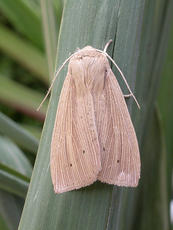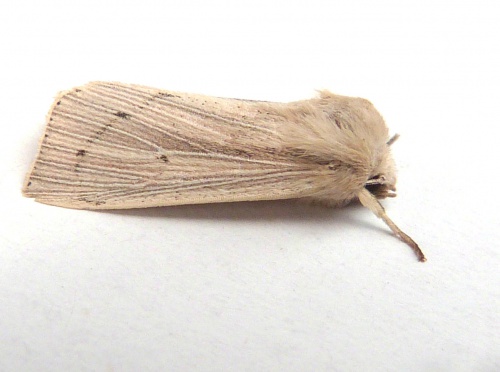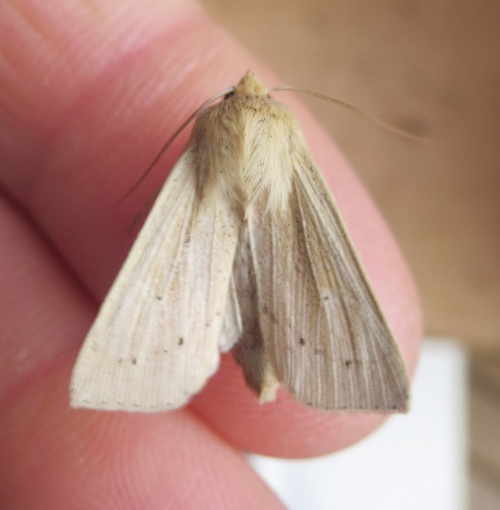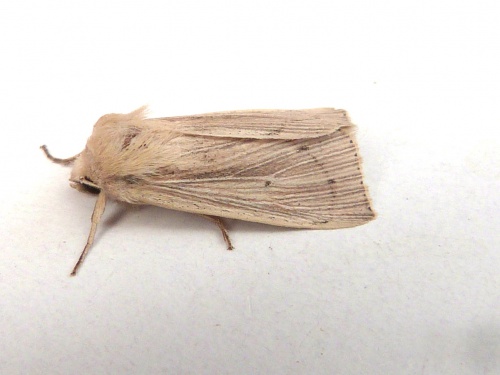Southern Wainscot - Mythimna straminea
Wingspan 32 to 40 mm. The forewing has a brown streak along the pale central vein. The outer cross row of dark dots is usually well developed.
This species can be hard to seperate from the Common Wainscot. Look out for the more angular wings,
a different dot pattern on the forewing, dots on the hindwing and a line across the "forehead" (see http://www.northumberlandmoths.org.uk/files/idtips/2197-southern-wainscot.jpg)
Found in reedbeds
The moths fly in July and are attracted to light.
The overwintering larvae feed on reed (Phragmites) and canary grass (Phalaris), hiding in the stems during the day.
Having a scattered distribution throughout England and Wales, it is commonest in the south and local further north into Cumbria. In a recent survey to determine the status of all macro moths in Britain this species was classified as local.
Occasional in Leicestershire and Rutland. L&R Moth Group status = C (very scarce resident or rare migrant).
Leicestershire & Rutland Map
Enter a town or village to see local records
MAP KEY:
Yellow squares = NBN records (all known data)
Coloured circles = NatureSpot records: 2020+ | 2015-2019 | pre-2015
UK Map
Species profile
- Common names
- Southern Wainscot
- Species group:
- Moths
- Kingdom:
- Animalia
- Order:
- Lepidoptera
- Family:
- Noctuidae
- Records on NatureSpot:
- 22
- First record:
- 07/08/2009 (Russell, Adrian)
- Last record:
- 10/08/2023 (Braker, Michael)
Total records by month
% of records within its species group
10km squares with records
The latest images and records displayed below include those awaiting verification checks so we cannot guarantee that every identification is correct. Once accepted, the record displays a green tick.
In the Latest Records section, click on the header to sort A-Z, and again to sort Z-A. Use the header boxes to filter the list.





